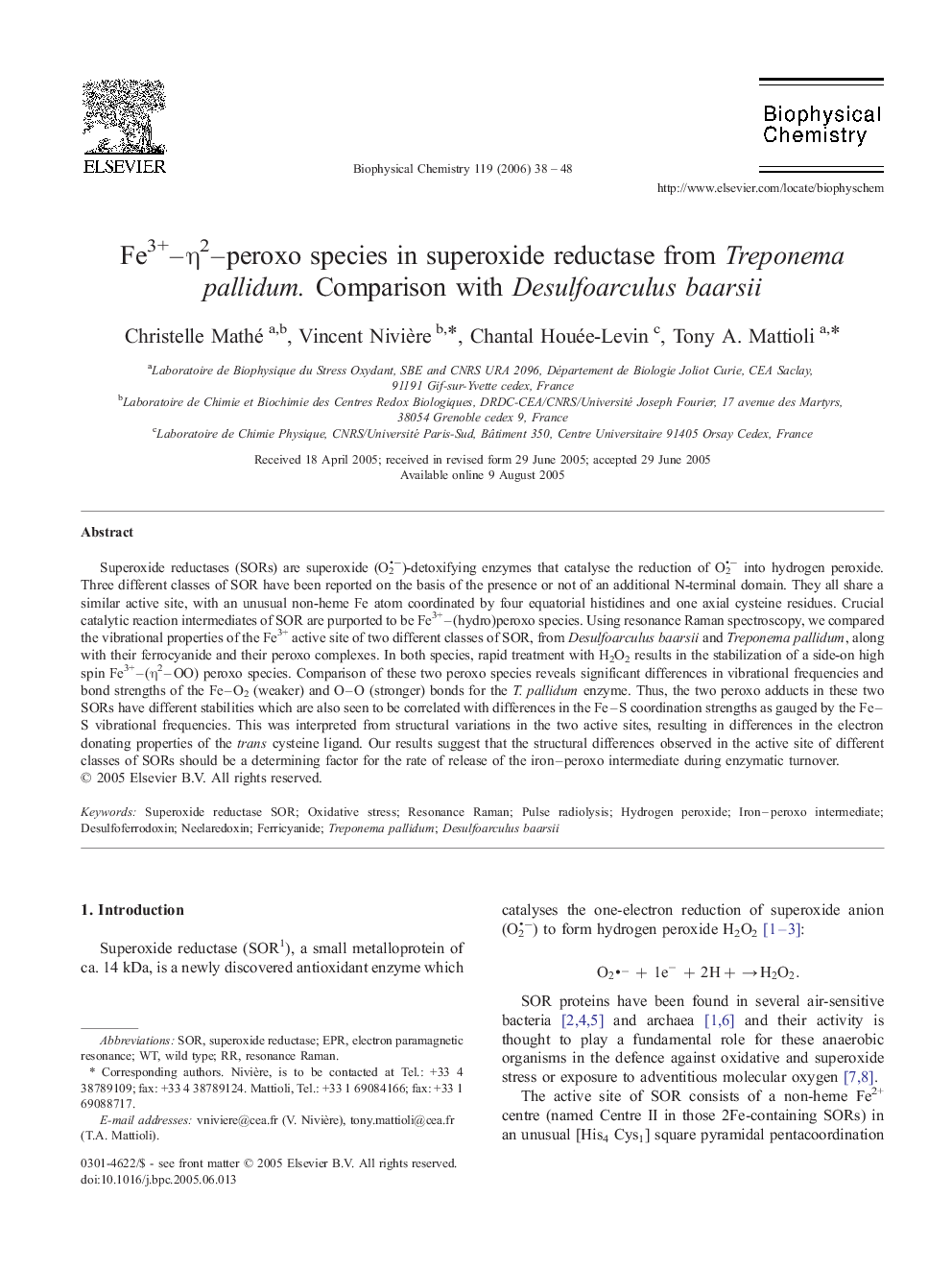| Article ID | Journal | Published Year | Pages | File Type |
|---|---|---|---|---|
| 5372549 | Biophysical Chemistry | 2006 | 11 Pages |
Superoxide reductases (SORs) are superoxide (O2â)-detoxifying enzymes that catalyse the reduction of O2â into hydrogen peroxide. Three different classes of SOR have been reported on the basis of the presence or not of an additional N-terminal domain. They all share a similar active site, with an unusual non-heme Fe atom coordinated by four equatorial histidines and one axial cysteine residues. Crucial catalytic reaction intermediates of SOR are purported to be Fe3+-(hydro)peroxo species. Using resonance Raman spectroscopy, we compared the vibrational properties of the Fe3+ active site of two different classes of SOR, from Desulfoarculus baarsii and Treponema pallidum, along with their ferrocyanide and their peroxo complexes. In both species, rapid treatment with H2O2 results in the stabilization of a side-on high spin Fe3+-(η2-OO) peroxo species. Comparison of these two peroxo species reveals significant differences in vibrational frequencies and bond strengths of the Fe-O2 (weaker) and O-O (stronger) bonds for the T. pallidum enzyme. Thus, the two peroxo adducts in these two SORs have different stabilities which are also seen to be correlated with differences in the Fe-S coordination strengths as gauged by the Fe-S vibrational frequencies. This was interpreted from structural variations in the two active sites, resulting in differences in the electron donating properties of the trans cysteine ligand. Our results suggest that the structural differences observed in the active site of different classes of SORs should be a determining factor for the rate of release of the iron-peroxo intermediate during enzymatic turnover.
